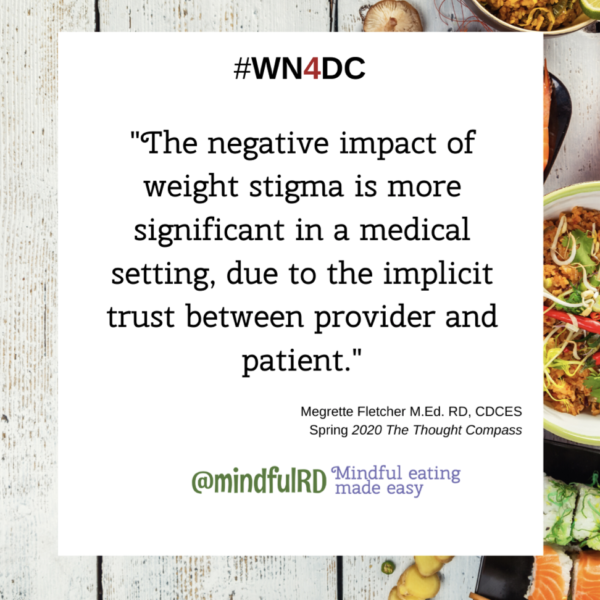To understand what makes DEB-D escalate, we must begin by understanding how weight stigma, DEB and diabetes are connected. This begins with some very basic definitions about weight stigma and how it impacts diabetes care.
What is Weight Stigma?

Weight stigma is the prejudice and discrimination towards higher weight individuals. This vanilla definition can include repeated weight-related teasing, bullying, harassment, violence, hostility, pressures to lose weight/be thin, negative appearance commentary, and weight-related micro-aggressions in general. Looking at examples of weight stigma in a medical session can include an unwillingness to wait for a patient who ambles, failure to have adequate-sized gowns, chairs, or blood pressure cuffs for higher weight individuals. Another example might be to suggest weight loss for a client who came in for a concern unrelated to weight. While these examples of weight stigma may appear insignificant, the negative impact of weight stigma is more significant in a medical setting, due to the implicit trust between provider and patient. A failure to consider the needs of higher weight individuals erodes this trust with each poor interaction.
Eroding Trust
Weight biased interactions erode confidence and damages the provider-client relationship because they reinforce the weight-centered stereotype. This places the higher weight individual on alert, creating or reinforcing a stress response. Being “on alert” means that these individuals are more likely to be aware of the possibility of rejection or derogation, which creates a cycle of harm.
The higher weight individuals who have experienced weight stigma want to avoid this shaming experience and may become fearful it will happen again. This preoccupation increases sensitivity and reaction to common weight-centered approaches associated with diabetes care. This desire may be documented in the medical chart as, “The client wasn’t receptive to dietary changes,” “The client will not engage in weight loss behaviors,” or “Non-compliant.”
It is easy to see how the higher weight client and the weight-centered provider are already not on the same page, creating the conditions for resistance or avoidance of clinical care. This is especially true if the patient-perceived their body weight will be a source of embarrassment in that setting.

